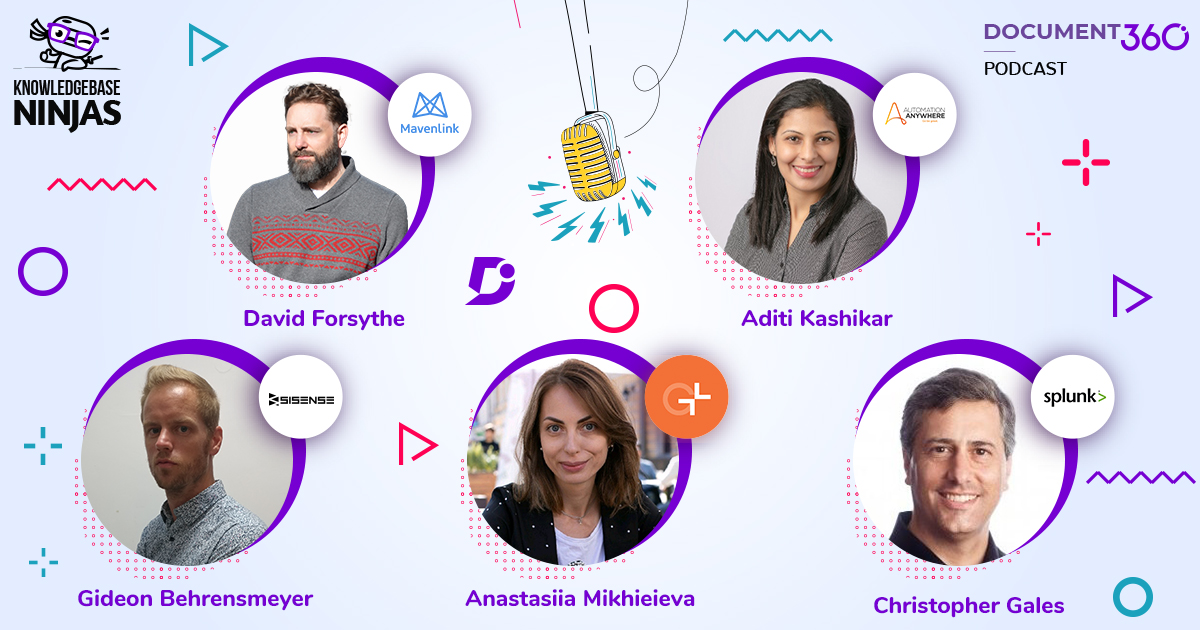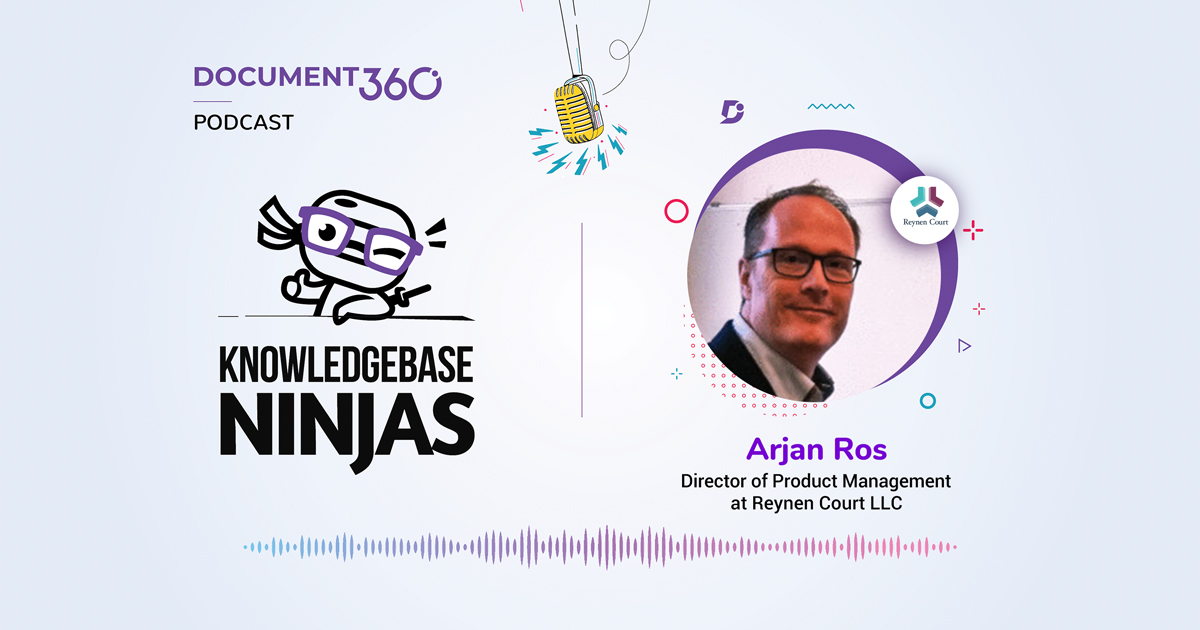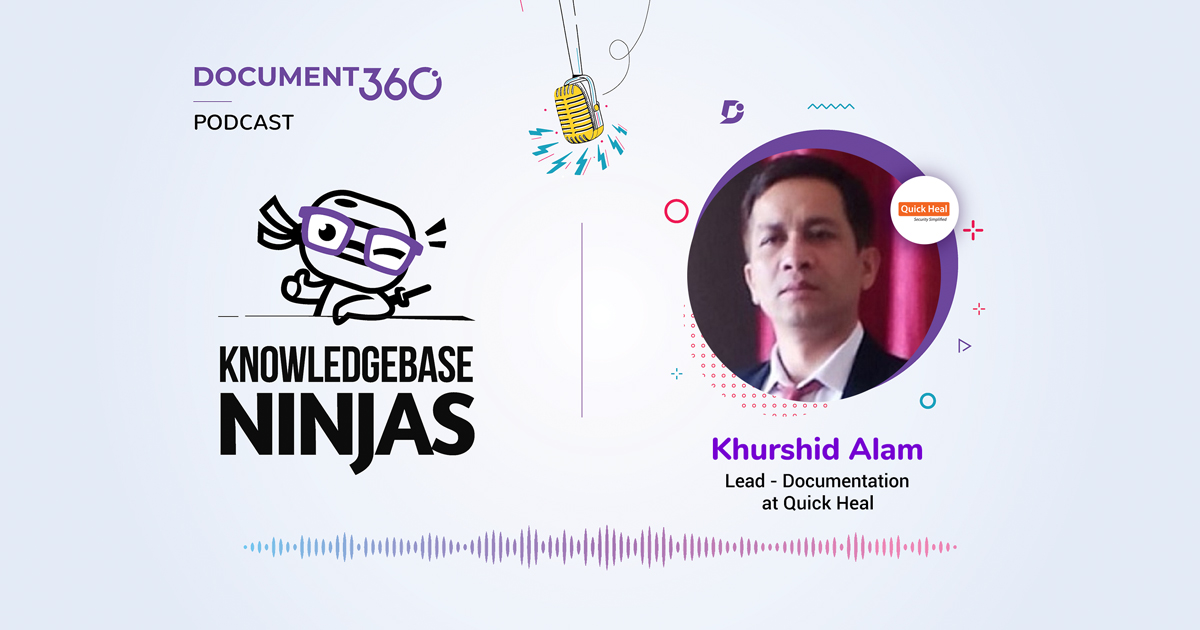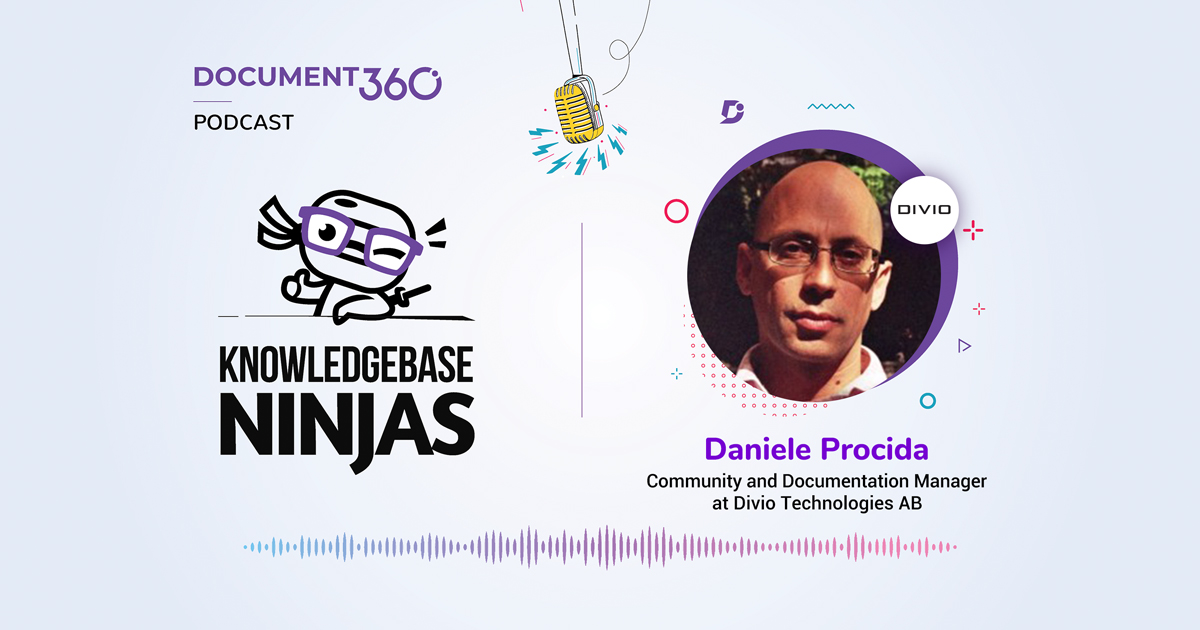As you may know, we have been interviewing thought leaders in the world of technical writing and documentation since December of last year and May… was a fantastic month.
We welcomed five guests onto the show: David Forsythe, Aditi Kashikar, Anastasiia Mikhieieva, Gideon Behrensmeyer and Christopher Gales – we are deeply honoured and grateful for the time each of them spent with us to record!
I have summarised five key insights from these episodes below:
“Discovering the world of documentation through education…”
Four of our guests on the Knowledgebase Ninjas “discovered’ their passion for documentation whilst at college/university:
- Technical writing had been at the confluence of everything David loved at a young age: writing and making art.
- Aditi’s journey began after she completed her post-graduate diploma in mass communications. She has always loved writing and expressing herself through words.
- When Gideon moved back to Israel, he saw there was a huge demand for technical writers. Because he had both liberal arts and technical experience he found that technical writing was a natural fit.
- Chris’s journey into documentation started when he was at university. He worked very closely with the historians for an archival research project, he produced documents for them on how to use the database when he finished his degree.
The crucial factors in documentation creation…
We asked all of the Knowledgebase Ninjas what are the important factors they consider when creating documentation, this brought led to a couple of interesting conversations on how to improve documentation.
Four of the guests mentioned that the most important factors when creating your documentation is being able to put your users first, to do this you must:
- Aim to provide informative, helpful, and user-friendly documentation.
- Improve your published materials based upon the customer feedback
- Ensure your documentation is fully indexed by Google – (users are able to get to your site just by typing [company name] Documentation’ on Google).
- Understand you user personas and user profiles. You can do this by asking yourself: “What are the goals your users are trying to achieve when using your product?”
However David makes a valid point by saying that consistency in terminology, tone, and voice is incredibly important. So it’s important to consider the arrangement of text and images, be mindful to include line breaks which introduce light space.
Quote of the month…
Christopher Gales of Splunk said:
“Companies have to wake up and recognise that they are just one player in a broader community conversation about their product”
Christopher furthers this by saying that nowadays customers expect to have a voice within the documentation and companies have to recognise and contend with the fact that they aren’t the only source of information about their products and they might not even be the most trustworthy source in some cases.
What is your documentation creation process?
David brilliantly explains that there is no ‘one size that fits all’ to documentation, he further explains that the standard contributor process which is: interview, research, identify the audience and medium, draft, review then publish.
We have had a variety of answers when asking this question to our guests…
Aditi’s team follows a CICD (Continuous Integration Continuous Development) approach when it comes to their online documentation. CICD means that they closely engage with product management and engineering teams in the requirements gathering and backlog phases.
Anastasiia’s team works according to a 4-week sprint because they aim to release a piece of documentation per month. Her technical writers try to work closely with the product managers as they have direct contact with the customers and can suggest documentation improvements.The information designers have to approve the documentation plan, each member on her team, works on a particular feature or release documentation.
Majority of the guests said that their team works closely with the product managers to release quality documentation. This is because the product managers are in constant contact with their customers and they are able to provide feedback on the documentation expectations.
Recommended documentation related resources:
See the various documentation related resources shared by our May guests:
- Don’t Make Me Think
- ClickHelp
- IdRatherBeWriting
- Scriptorium Podcast
- The Not-Boring Tech Writer
- How to Become a Data-Driven Documentation Team
- Write The Docs Slack
And there we are!
Feel free to check out each individual episode here:
- David Forsythe of Mavenlink
- Aditi Kashikar of Automation Anywhere
- Anastasiia Mikhieieva of GlobalLogic
- Gideon Behrensmeyer of Sisense
- Christopher Gales of Splunk
Thanks for reading and before you go I have one question:
What are you currently using house and produce your documentation?
Please share your opinion in the comments below..



 –
– 

